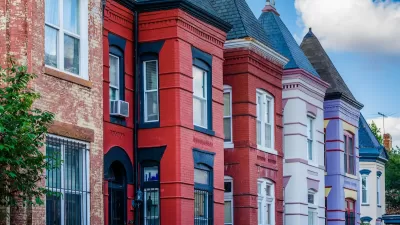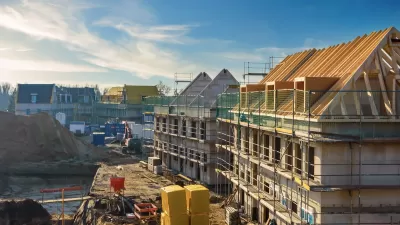Focusing on zoning in hot-market urban centers misses economic realities—and major opportunities.

For the past couple of years, there have been a growing number of voices saying that to address the housing affordability problem, what we need to do is build more housing— not necessarily more affordable housing, but more housing, period. Sound bites like “yes, you can build your way to affordable housing” are showing up more and more.
A key part of that case is that what’s needed to make that happen is changing zoning ground rules. The poster child for this argument is San Francisco, which, as everyone points out, has mind-bogglingly high housing prices, a desperate shortage of affordable housing, and a metastasizing homelessness problem.
There’s a decent argument that, under some conditions, building more housing for the market will moderate some prices to some degree, and that zoning has something to do with it. But ultimately it will take a lot more than building more expensive market housing in downtown San Francisco or Seattle to begin to tackle those cities’ housing crises. In fact, the realities of building in high-demand, already built up urban areas mean that zoning changes in those areas will have relatively little effect.
Most of the zoning conversation is missing if not the entire point, a big part of it. Spoiler alert: The real zoning issue is what happens in the suburbs. While that gets periodically acknowledged, too few people are talking about it and even fewer are focusing on making change in specifically those places.
The Tangled Relationship Between Supply and Demand
A lot of the people who argue that regulations are causing inadequate supply don’t appear to have looked at the numbers....
FULL STORY: More Housing Could Increase Affordability—But Only If You Build It in the Right Places

Maui's Vacation Rental Debate Turns Ugly
Verbal attacks, misinformation campaigns and fistfights plague a high-stakes debate to convert thousands of vacation rentals into long-term housing.

Planetizen Federal Action Tracker
A weekly monitor of how Trump’s orders and actions are impacting planners and planning in America.

In Urban Planning, AI Prompting Could be the New Design Thinking
Creativity has long been key to great urban design. What if we see AI as our new creative partner?

King County Supportive Housing Program Offers Hope for Unhoused Residents
The county is taking a ‘Housing First’ approach that prioritizes getting people into housing, then offering wraparound supportive services.

Researchers Use AI to Get Clearer Picture of US Housing
Analysts are using artificial intelligence to supercharge their research by allowing them to comb through data faster. Though these AI tools can be error prone, they save time and housing researchers are optimistic about the future.

Making Shared Micromobility More Inclusive
Cities and shared mobility system operators can do more to include people with disabilities in planning and operations, per a new report.
Urban Design for Planners 1: Software Tools
This six-course series explores essential urban design concepts using open source software and equips planners with the tools they need to participate fully in the urban design process.
Planning for Universal Design
Learn the tools for implementing Universal Design in planning regulations.
planning NEXT
Appalachian Highlands Housing Partners
Mpact (founded as Rail~Volution)
City of Camden Redevelopment Agency
City of Astoria
City of Portland
City of Laramie





























